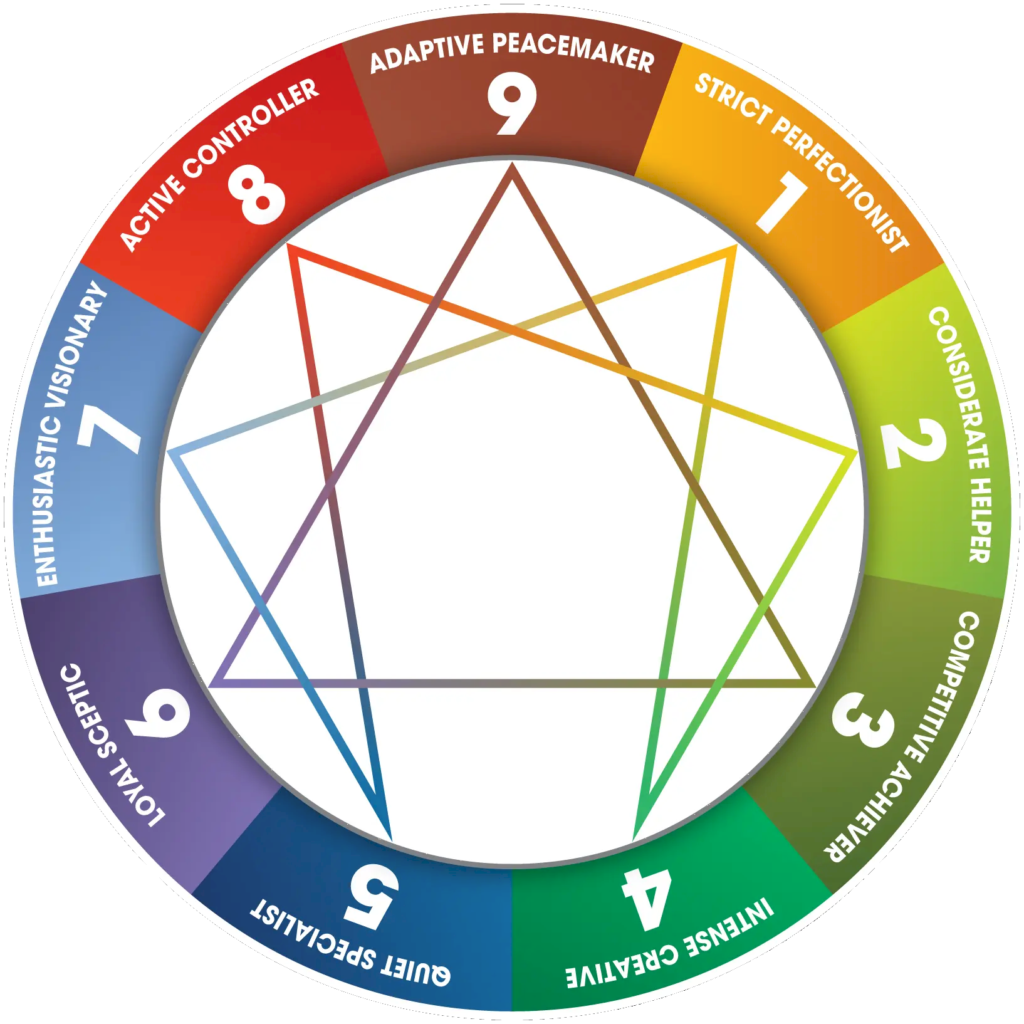The Enneagram and Its Relationship to Personal Growth
The Enneagram is a profound and ancient system of self-awareness, rooted in both spiritual and psychological traditions. Its primary focus is on understanding human personality, but its depth goes far beyond mere categorizations. With its intricate model of nine primary personality types, the Enneagram provides insights into our core motivations, fears, desires, and potential paths of growth or disintegration.

Origins and Basics of the Enneagram
The exact origins of the Enneagram are shrouded in mystery, but its roots can be traced back to various spiritual traditions, including early Christian mysticism, Sufism, and possibly even further back to ancient Egypt or Greece. The word “Enneagram” derives from the Greek words “ennea” (meaning nine) and “gramma” (meaning something written or drawn), reflecting the nine-pointed figure that represents the system.
The Nine Types
At the heart of the Enneagram are nine distinct personality types, each associated with specific motivations, fears, and desires:
- Type 1 – The Perfectionist: Motivated by the desire to be good and righteous. They fear being corrupt or imperfect.
- Type 2 – The Helper: Driven by the desire to be loved and needed, fearing being unwanted or unworthy of love.
- Type 3 – The Achiever: Desires to feel valuable and worthwhile by achieving success. Fears being worthless.
- Type 4 – The Individualist: Seeks to establish identity through uniqueness and authenticity. Fears having no identity or personal significance.
- Type 5 – The Observer: Desires to be competent and capable, fearing being helpless or overwhelmed.
- Type 6 – The Loyalist: Driven by the need for security and support. Fears being abandoned or without guidance.
- Type 7 – The Enthusiast: Seeks pleasure, stimulation, and fears pain and deprivation.
- Type 8 – The Challenger: Desires to protect themselves by being in control of their environment. Fears being controlled or harmed by others.
- Type 9 – The Peacemaker: Seeks peace, comfort, and fears conflict and disconnection.
These nine types are further organized into three triads, based on the centers of intelligence: the Gut (types 8, 9, 1), the Heart (types 2, 3, 4), and the Head (types 5, 6, 7).
Wings, Levels of Development, and More
While each of us has a dominant type, the Enneagram acknowledges the fluidity and complexity of human nature. The concept of “wings” represents this, suggesting that we are also influenced by one of the two types adjacent to our main type. For instance, a Type 3 can have a 2-wing (3w2) or a 4-wing (3w4).
Each type also experiences varying levels of psychological health, illustrated by stages of development ranging from healthy, average, to unhealthy. These stages illuminate the potential for growth or disintegration.
The Enneagram and Personal Growth
The true value of the Enneagram is not just in identifying one’s type but in using that knowledge as a springboard for personal growth. Here’s how:
- Self-awareness: Recognizing your dominant type helps in understanding deep-seated motivations and patterns. This awareness acts as the first step towards transformation.
- Understanding Triggers: Each type has specific triggers that lead to stress or disintegration. By being aware of these, one can develop coping mechanisms and resilience.
- Empathy and Improved Relationships: Understanding that others operate from different core motivations can improve empathy, compassion, and interpersonal relationships.
- Spiritual Development: Many people use the Enneagram as a tool for spiritual growth, understanding their soul’s purpose, and deepening their connection to the divine or a higher self.
- Path of Integration: Each type has a direction of integration, leading to another type’s healthy attributes. For instance, when a Type 8 integrates, they move towards the positive qualities of Type 2, becoming more caring and altruistic.
Limitations and Caution
While the Enneagram is powerful, it’s essential to approach it with an open mind and heart. One should avoid stereotyping or pigeonholing others based solely on their type. It’s also crucial to remember that the Enneagram is a tool, not a definitive label.
Conclusion
The Enneagram, with its intricate understanding of human psyche, offers profound insights into personal growth. While its categorization can seem complex, its core message is simple: by understanding our deepest motivations and fears, we can pave the way for transformation, healing, and a deeper connection with ourselves and others.